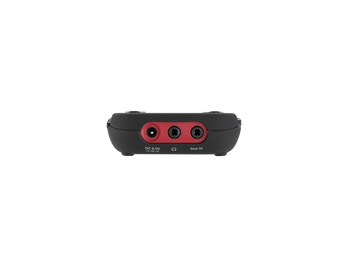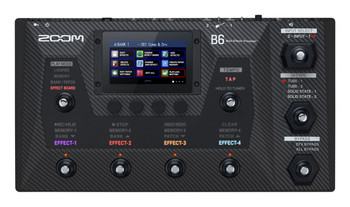Description
The Transient Designer offers a completely new technology for level-independent shaping of the dynamic response of a sound: For the first time it is possible to control the attack and sustain behaviour of a signal in a very simple way! Unlike other dynamic devices, the processing is not goverened by the signal level but rather by its dynamic envelope, so all signals (loud and soft) are processed equally.
Features
- The attack of a bass drum or a loop can be emphasised with a single control to increase the punch and the penetration in the mix
- Sustain of a snare or room-sound can be shortened very musically to clean up the mix for more transparency
- Acoustic or electronic instruments become "in the face" sounds or can be smoothened with lower attacks
- De-verb capability! Less Sustain shortens reverb flags of any sound (more elegant than gates do)
- New panorama effects based on different dynamic effects per channel – try this with loops for example
Differential Envelope Technology
SPL's Differential Envelope Technology is the first analog solution for level-independent shaping of envelopes allowing transients to be accelerated or slowed down and sustain prolonged or shortened. The degree of dynamic processing required to do this couldn't be duplicated even using a chain of several conventional compressors, yet only two controls per channel are required to allow the user to completely reshape the attack and sustain characteristics of a sound. Attack can be amplified or attenuated by up to 15dB while Sustain can be amplified or attenuated by up to 24dB, enabling weak drum sounds to be made much more percussive and powerful, or for over-percussive transients to be softened. All necessary time constants (Attack, Decay and Release) are automated and optimised adaptively in a musical manner according to the characteristics of the input signal. This results in natural sounding signal processing and fast operation.
How Does it Work?
The Transient Designer uses envelope followers to track the curve of the natural signal so that optimum results are guaranteed regardless of the input signal's dynamics. Because of the level-independent processing inherent in Differential Envelope Technology (DET), manual threshold adjustments are not required.
With No Effort
you can accelerate or slow down attack and prolong or shorten sustain portions of all kinds of percussive signals, such as bass drum, snares, toms, congas, etc. Let them jump into your face or flatten them with a turn of a single knob. Booming toms for example are dried up in seconds — it’s almost like being able to change the amount of drum damping after the recording. Your idea of a kick drum sound is a kick drum in the words best sense? Just dial it in.
The same applies to virtually any other signal: Amplify or reduce the picking sound of an acoustic guitar, hold the sound of the strings longer, reduce the reverb time of a choir, actuate the piano pedal “electronically”, turn down the slap bass a notch or give it even more attack, etc.
Other Features and Connectivity
For stereo operation the Link function connects channel pairs (1 and 2 and/or 3 and 4). Linked channels are controlled by the same side-chain voltage so as to maintain a coherent and stable stereo image. When operating in Link-mode, the control elements of the first (or third) channel, including the Active switch, control the second (or fourth) channel, too.
Each channel is equipped with a relay hard bypass circuit to ensure a minimum signal path when the process is bypassed and to provide power fail safety. The Signal-LEDs allow to quickly monitor the signal flow, which is particularly important if the four channels are connected to a patchbay. The Transient Designer is fitted with XLR-connectors for balanced operation. To improve signal quality, SPL has developed a new hybrid-component balanced input/output stage using all laser-trimmed resistors with a tolerance of 0.01%. This approach has resulted in an exceptionally high CCMR (common mode rejection) better than -80dB at 1kHz.
Applications
Drums & Percussions
One of the most interesting applications of the Transient Designer is processing drum and percussion sounds, both from samples to live drum sets:
- The attack of a bass drum or a loop can be emphasised to increase the power and presence in the mix
- The sustain period of a snare or a reverb-flag can be shortened in a very musical way to obtain more transparency in the mix
- Recording a live drum set, toms or overheads can be shortened without physically damping them
- Miking live drums is considerably faster and easier, because the apparent 'distance' of the microphone can be corrected by varying the ATTACK and SUSTAIN values
- The Transient Designer is a perfect partner to noise gates in live drum miking
- Corresponding adaptively to the duration of the original signal, the sustain can be shortened more musically than with tightly adjusted release times, effectively reducing crosstalk
- When recording live drums or other instruments on a HD recording system, the Transient Designer prevents time-consuming removing of crosstalk signals on the hard disk
- It is possible to create unusual dynamic effects, including new and interesting pan effects. If, for example, a mono loop is patched through two channels of the Transient Designer panned hard left and right in the mix, such that the left channel is processed with increased attack and reduced sustain while the right channel is adjusted in the opposite way, a very special stereo loop sound is created. You have to try this to appreciate what it sounds like, but expect to hear a lot of unusual stereo movement
- By reducing attack and increasing sustain, signals that are too up-front sounding can be moved back into the mix. Additionally the FX parts of 'too dry' signals are strengthened
- Drum sounds are easier to integrate into the mix. If the acoustic level of a snare is expanded to approximately +4dB by increasing the attack value, the effective increase of peak levels in the overall mix is merely about 0.5dB to 1dB
Guitars
Used for processing guitar sounds, the Transient Designer softens the instrument by lowering the attack. Alternatively, increasing the attack lets the sound jump to the front of the mix, which works particularly well for picking guitars.
Highly distorted electric guitars are already highly compressed, leaving them with minimal dynamic range. This can obscure the note attacks, but increasing the attack setting clarifies the individual notes. High distortion also prolongs the sustain, broadening the sound. Reducing the sustain setting counteracts those effects.
Increasing the sustain period of miked acoustic guitars produces clearer audible stereophonic sounds. Reducing the sustain value can help dry up the sound.
Choirs & Backings
When recording choirs, the effect of too much 'ambience' can be reduced by using a lower sustain setting. Reversely, not enough room can be added by turning up the Sustain control.
Keyboards, Samples & Drum-Machines
Frequently keyboard and sample sounds are intensively compressed leaving little of their original dynamic range. Increasing the attack brings back the natural dynamics so the sounds need less space in the mix and are easier to pick out, even at lower levels. With the help of the Transient Designer 'budget' drum machines can provide sounds and grooves that sound far more powerful and dynamic than the original untreated sounds.
Movie Post Pro
Effect sounds and sample libraries benefit from more punch and more power useful when working on TV commercials or movie soundtracks. 'Out door' recordings often suffer from poor microphone positioning. The Transient Designer can help create the effect of re-positioning the mics during the mix.
Mastering
However, like any good thing, you have to know where not to use it. For example, use in mastering is not recommended as it's rarely a good idea to treat a whole mix at once. Instead, treat individual elements within the mix. Nevertheless, we have been noted by our customers that a little less sustain and a little more attack can effecively tighten a mix.
Specifications
Instrumentation amplifier, electronically balanced (differential), transformerless
Nominal input level: +6dB
Input impedance: = 22kOhms
Output impedance: < 600Ohms
Max. input level : +24dBu
Max. output level: +22,4dBu
Minimum load ohms: 600Ohms
Measurements
Frequency response: 20 Hz - 100 kHz
(100 kHz = -3 dB)
CCMR (common mode rejection): - 80dBu @1kHz
THD & N: 0,004% @1kHz
S/N CCIR 468-3: -89dBu
S/N A-weighted: -105dBu
Power Supply
Torroidal transformer: 15VA
Fuse: 315mA
Ground-Lift switch Voltage selector
Dimensions
Housing: Standard EIA 19"/1U, 482 x 44,45 x 237mm
Weight: 3,4 kg
Note: 0dBu = 0.775V

















